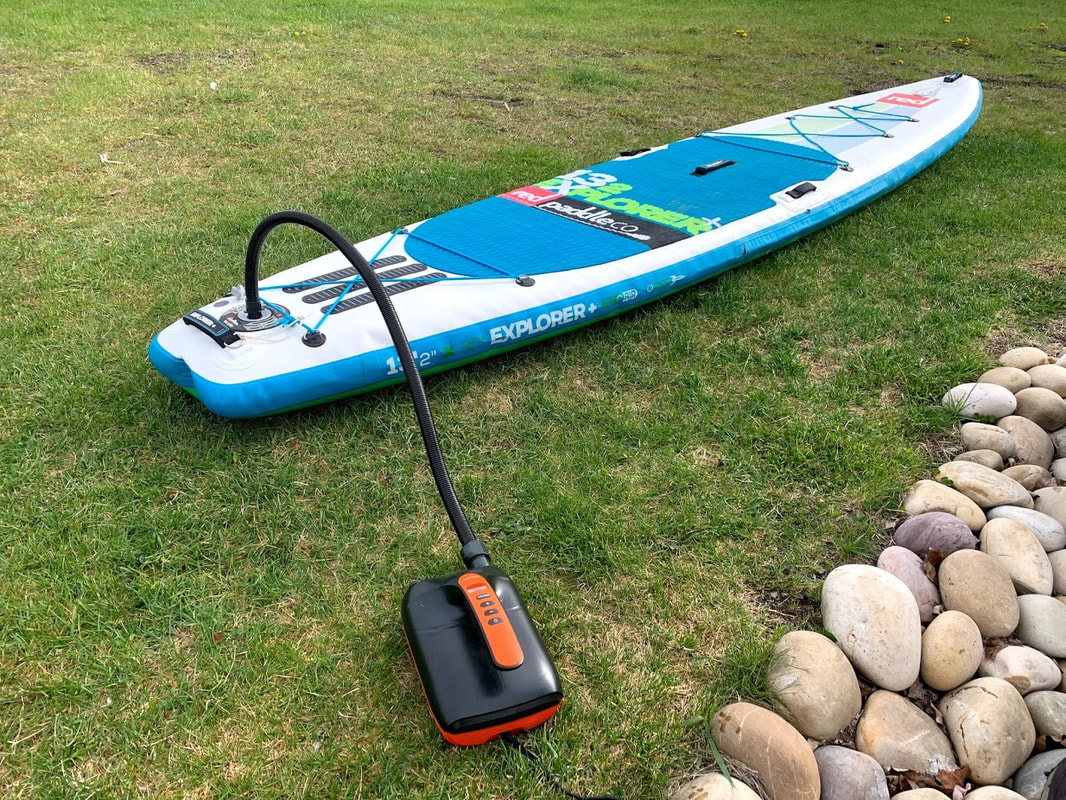At the heart of every SUP adventure lies a crucial element – the pump. It's not just about inflating your board; it's about starting your journey right!
In this article, we dive into the nuances of two popular choices: the trusty hand pump and the modern electric SUP pump.
We'll explore their pros and cons while analyzing their efficiency. Our goal? To arm you with the knowledge to make an informed decision on which pump best suits your paddleboarding lifestyle. Also, this guide should give you direction on what type of air pump for inflatables should you go for!
So, let's embark on this exploration together, and find out which pump – hand or electric – will be your ideal companion on your next SUP journey.
Hand Pumps – The Traditional Way!
When it comes to inflating your SUP (Stand Up Paddleboard), hand pumps are often the first tool that comes to mind. These are the traditional, manual pumps that have been around since the early days of paddleboarding.
Let's dive into what makes hand pumps a steadfast option, their benefits, and some of the challenges they present.
Pros of Hand Pumps
- Portability: One of the biggest advantages of a hand pump is its portability. These pumps are usually lightweight and compact, making them easy to carry along on your SUP adventures.
- No Need for a Power Source: Hand pumps operate purely on manual effort. This means you don’t need to worry about finding an electrical outlet or ensuring your electric pump’s battery is charged. It's a reliable tool that's ready whenever you are.
- Lower Cost: Generally, hand pumps are less expensive than their electric counterparts. If you're on a budget or just starting with paddleboarding, a hand pump can be an economical choice.
Cons of Hand Pumps
- Physical Effort Required: The most obvious downside of a hand pump is the physical effort it requires. Inflating a SUP can be a mini workout in itself, especially if your board has a high volume or you're preparing multiple boards. It can be tiring.
- Time-Consuming: Compared to electric pumps, hand pumps take more time to fully inflate a SUP.
- Less Suitable for Inflating Multiple Boards: If you're planning a paddleboarding outing with friends or family and have multiple boards to inflate, a hand pump might not be the most efficient choice.
Electric SUP Pumps – The Modern Method
Electric SUP pumps are your go-to solution for hassle-free inflation. These pumps are designed to take the grunt work out of preparing your paddleboard. Simply connect the pump to a power source, set your desired PSI (pounds per square inch), and watch as it brings your SUP to life.
Pros of Electric SUP Pumps
- Quick and Effortless Inflation: Say goodbye to manual labor. With an electric pump, you can have your board ready in a fraction of the time it takes with a hand pump, and without breaking a sweat.
- Consistent Air Pressure: Precision is key in paddleboarding, and electric pumps deliver just that. They provide a consistent and accurate PSI, which is crucial for the board's performance and longevity.
- Ideal for Multiple Boards: If you're out with friends or handling more than one board, electric pumps are a lifesaver. They make it feasible to inflate several boards in the time it would normally take to prepare just one manually.
Cons of Electric SUP Pumps
- Power Source: Electric pumps need a power source. Some are rechargeable and some are not. Rechargeable pumps usually do not have very high pressure and can inflate around 3-6 SUPs depending on their battery. However, direct power pumps are powered using your car’s battery. So, you’ll need to have a car or other types of power outlet with you.
- Price: Price is probably the main con of an electric SUP pump. A good quality SUP pump, such as a Flextail MAX retails for around 230$.
Now that you’re aware of the pros and cons of Hand pumps and electric SUP pumps, you should understand which suits you better and make a decision accordingly!


